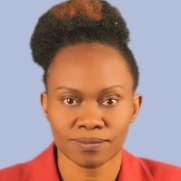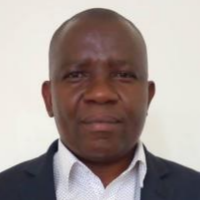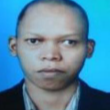International Journal of Information Technology and Computer Science (IJITCS)
IJITCS Vol. 11, No. 11, 8 Nov. 2019
Cover page and Table of Contents: PDF (size: 668KB)
Stakeholders’ Attitude on the Use of ICT Tools for Sustainable Propagation of Indigenous Knowledge in Tanzania: A Case of Traditional Medical Knowledge of Medicinal Plants
Full Text (PDF, 668KB), PP.34-43
Views: 0 Downloads: 0
Author(s)
Index Terms
Traditional medical knowledge, Traditional medicine, Extinction, Indigenous knowledge, ICT, Web-mobile, Digital systems
Abstract
Most local communities in Tanzania depend on herbal remedies as the primary source of health care and such knowledge have been stored in the minds of the elderly who pass it on orally to young generations. However, the method is not reliable, as there is a likelihood of gradual loss of such knowledge as the elderly become older and incapacitated. It is at the backdrop of such a scenario that this study investigated the stakeholder’s attitude towards the use of information and communication technology tools in preserving traditional medical knowledge in Tanzania. The study also investigated the existing approaches for managing both traditional medical practitioners, herbaria activities and the difficulties. Both quantitative and qualitative data were employed and the study covered Arusha, Kagera and Dar es Salaam regions where 60 ethnobotanical researchers and 156 traditional medical practitioners were involved. The collected data was analyzed using R and Tableau software. The study indicated that 75% of traditional medical practitioners use story-telling for preserving traditional medical knowledge; 86.53% of practitioners indicated that much of the knowledge has disappeared over generations. More than half (69.87%) of practitioners were aware of the existence of technological devices for accessing the internet and 80.5% of researchers and practitioners believed that Information and Communication Technology tools have benefits in the practice of traditional medicine. From the findings, the study came up with the ICT model solution that can help in documenting, preserving and disseminating traditional medical knowledge and integrate the management of stakeholders in Tanzania.
Cite This Paper
Irene Evarist Beebwa, Janeth Marwa, Musa Chacha, Mussa Ally Dida, "Stakeholders’ Attitude on the Use of ICT Tools for Sustainable Propagation of Indigenous Knowledge in Tanzania: A Case of Traditional Medical Knowledge of Medicinal Plants", International Journal of Information Technology and Computer Science(IJITCS), Vol.11, No.11, pp.34-43, 2019. DOI:10.5815/ijitcs.2019.11.04
Reference
[1]Anyaoku EN, Nwafor-Orizu OE, Eneh EA. Collection and Preservation of Traditional Medical Knowledge: Roles for Medical Libraries in Nigeria. J Libr Inf Sci. 2015;3(1):33–43.
[2]Hidayat E, Sensuse DI, Sucahyo YG, Noprisson H. Development of Mobile Application for Documenting Traditional Knowledge in Indonesia. 2016;
[3]Yuan H, Ma Q, Ye L, Piao G. The traditional medicine and modern medicine from natural products. Molecules. 2016;21(5).
[4]MoHCDEC. THE UNITED REPUBLIC OF TANZANIA The National Health Policy 2017 Sixth Draft Version For External Consultations with Ministries, Departments and Agencies. 2017;(October). Available from: http://www.tzdpg.or.tz/fileadmin/documents/dpg_internal/dpg_working_groups _clusters/cluster_2/health/JAHSR_2017/8.The_Nat_Health_Policy_2017_6th__24_October__2017.pdf
[5]Stanifer JW, Patel UD, Karia F, Thielman N, Maro V, Shimbi D, et al. The determinants of traditional medicine use in northern Tanzania: A mixed-methods study. PLoS One. 2015;10(4):1–17.
[6]Wassie SM, Aragie LL, Taye BW, Mekonnen LB. Knowledge, Attitude, and Utilization of Traditional Medicine among the Communities of Merawi Town, Northwest Ethiopia: A Cross-Sectional Study. Evidence-Based Complement Altern Med. 2015;2015:1–7.
[7]Haouari E, Makaou SE, Jnah M, Haddaouy A. A survey of medicinal plants used by herbalists in Taza (Northern Morocco) to manage various ailments. J Mater Environ Sci J Mater Environ Sci. 2018;9(6):1875–88.
[8]Mahomoodally MF. Traditional medicines in Africa: An appraisal of ten potent African medicinal plants. Evidence-based Complement Altern Med. 2013;2013(June).
[9]WIPO. Intellectual Property and Traditional medical knowledge. 2016;(134):1–4.
[10]Kayombo E, Mahunnah R, Uiso F. Prospects and Challenges of Medicinal Plants Conservation and Traditional Medicine in Tanzania Edmund. 2013;1(3):1–8.
[11]Shakya AK. Medicinal plants : Future source of new drugs. Int J Herb Med. 2016;4(4):59–64.
[12]WHOAFRO. Health Monitor. 2012;2016.
[13]Abbott R. Documenting Traditional Medical Knowledge. World Intellect Prop Organ [Internet]. 2014;(March):48. Available from: http://www.wipo.int/export/sites/www/tk/en/resources/pdf/medical_tk.pdf
[14]Nakata M, Hamacher D, Warren J, Byrne A, Pagnucco M, Harley R, et al. Using Modern Technologies to Capture and Share Indigenous Astronomical Knowledge. Aust Acad Res Libr. 2014;45(2):101–10.
[15]Du Y, Guo L, Xue D. TKDL: A new tool in protecting and managing traditional knowledge of China. Proc - 2013 6th Int Conf Intell Networks Intell Syst ICINIS 2013. 2013;204–7.
[16]Vissers J, Bosch F Van Den, Bogaerts A, Cocquyt C, Degreef J, Diagre D, et al. Scientific user requirements for a herbarium data portal. 2017;57:37–57.
[17]URT. the Traditional and Alternatne Medicines Act, 2002. 2002;
[18]MUHAS. Institute of Traditional Medicine [Internet]. 2017 [cited 2018 Jun 28]. Available from: https://www.muhas.ac.tz/index.php/academics/muhas-institutes/110-itm
[19]JSTOR. National Herbarium of Tanzania [Internet]. 2018. Available from: Hearing
[20]Adebayo JO. Documentation and Dissemination of Indigenous Knowledge By Library Personnel in Selected Research Institutes in Nigeria. 2017;
[21]Cueva M, Kuhnley R, Revels LJ, Cueva K, Dignan M, Lanier AP. Bridging storytelling traditions with digital technology. Int J Circumpolar Health. 2013;72(SUPPL.1).
[22]Rao NS. ICT Applications in Medicinal and Aromatic Plants. 2016;3(1):27–9.
[23]Sharma AK. Indigenous Knowledge Communication in the 21 St Century. 2014;128–35.
[24]Kasilo OM, Trapsida J-M. Regulation of Traditional Medicine in the WHO African Region. African Heal Monit. 2013;(14):25–31.
[25]Koumpouros Y, Birbas K, Kapodestrian N. 7 (2013),i. 2013;7.
[26]Hunter J. The role of information technologies in indigenous knowledge management. Aust Acad Res Libr. 2005;36(2):109–24.
[27]Ghosh P, Palbag S. TKDL : AN ANSWER TO BIOPIRACY IN INDIA. 2017;5(11).
[28]AIMS. Tanzania Biodiversity Information Management Tool (BIMT): access data delineating areas of high biodiversity conservation priority in Tanzania. 2016; Available from: http://aims.fao.org/activity/blog/tanzania-biodiversity-information-management-tool-bimt-access-data-delineating-areas
[29]Nadkarni A, Rajam S. Capitalising the Benefits of Traditional Knowledge Digital Library (TKDL) in Favour of Indigenous Communities. NUJS L Rev. 2016;9:183–216.
[30]Xue R, Fang Z, Zhang M, Yi Z, Wen C, Shi T. TCMID : traditional Chinese medicine integrative database for herb molecular mechanism analysis. 2013;41(November 2012):1089–95.
[31]Mangare CF, Li J. A Survey on Indigenous Knowledge Systems Databases for African Traditional Medicines. 2018;(May):9–15.
[32]Moshi MJ, Otieno DF, Mbabazi PK, Weisheit A. Ethnomedicine of the Kagera Region, north western Tanzania. Part 2: The medicinal plants used in Katoro Ward, Bukoba District. J Ethnobiol Ethnomed. 2010;6(1):19.
[33]York N, Garden B. Plants Used in Traditional Medicine by Hayas of the Kagera Region , Tanzania Author ( s ): S . C . Chhabra and R . L . A . Mahunnah Published by : Springer on behalf of New York Botanical Garden Press Stable URL : http://www.jstor.org/stable/4255597 . PLA. 2014;48(2):121–9.
[34]Zhuang H, Vedvyas I, Dole R. Tutorial: OpenRefine. 2011;
[35]Venables WN, Smith DM. An Introduction to R. 2019;0.
[36]Sood A, Sinha N, Dewjee S, Zhao W. Tableau Tutorial User Documentation. 2018; Available from: https://casci.umd.edu/wp-content/uploads/2013/12/Tableau-Tutorial.pdf
[37]Slade J, Yoong P. the Types of Indigenous Knowledge To Be Retained for Young New Zealand Based Samoans : a Samoan Grandparents ’ Perspective. 2014;
[38]Chiwanza K, Musingafi MCC, Mupa P. Challenges in Preserving Indigenous Knowledge Systems : Learning From Past Experiences. 2013;3(2):19–26.
[39]Owiny SA, Mehta K, Maretzki AN. The use of social media technologies to create, preserve, and disseminate indigenous knowledge and skills to communities in East Africa. Int J Commun. 2014;8(1):234–47.
[40]Devi S, Thapa N. Preservation of the Traditional Knowledge of Tribal Population in India. 2015 4th Int Symp Emerg Trends Technol Libr Inf Serv. 2015;99–103.
[41]Dlamini PN. Use of Information and Communication Technologies Tools to Capture, Store, and Disseminate Indigenous Knowledge. 2017;(1995):225–47. Available from: http://services.igi-global.com/resolvedoi/resolve.aspx?doi=10.4018/978-1-5225-0833-5.ch010
[42]Mwammenywa IA, Kaijage SF. Towards Enhancing Access of HIV/AIDS Healthcare Information in Tanzania: Is a Mobile Application Platform a Way Forward? Int J Inf Technol Comput Sci. 2018;10(7):31–8.
[43]Obulutsa G. Tanzania internet users hit 23 million; 82 percent go online via phones: regulator [Internet]. 2018. Available from: https://www.reuters.com/article/us-tanzania-telecoms/tanzania-internet-users-hit-23-million-82-percent-go-online-via-phones-regulator-idUSKCN1G715F
[44]TCRA. Tanzania Internet Users [Internet]. 2017. Available from: https://www.tanzaniainvest.com/telecoms/tanzania-mobile-phone-subscribers-records-steady-growth-of-25-in-2015
[45]Plockey FD. The Role of Ghana Public Libraries in the Digitization of Indigenous Knowledge : Issues and Prospects. J Pan African Stud [Internet]. 2014;6(10):20–36. Available from: http://www.jpanafrican.org/docs/vol6no10/6.10-4-Plockey.pdf
[46]Sraku-Lartey M, Acquah SB, Samar SB, Djagbletey GD. Digitization of indigenous knowledge on forest foods and medicines. IFLA J. 2017;43(2):187–97.
[47]Fallis A. Building management tools/approaches for building tools/system modeling tools. J Chem Inf Model. 2013;53(9):1689–99.



